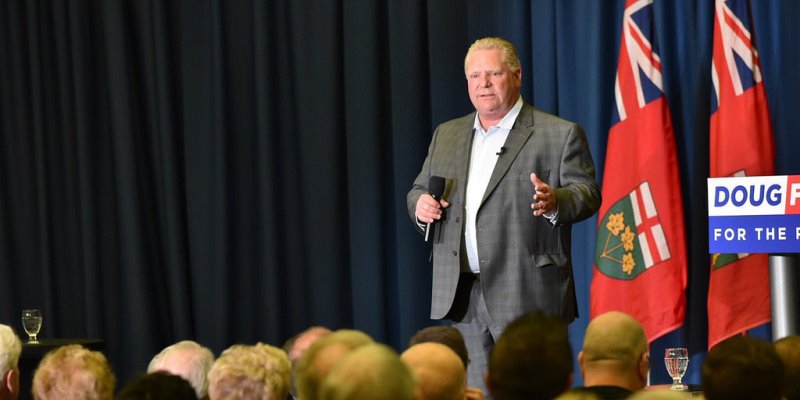Ford government continues to mirror fiscal approach of its predecessors

After the Ford government tabled Ontario’s budget for 2020/21, we noted that Ford’s approach to deficit-reduction and debt accumulation is remarkably similar to that of his Liberal predecessors. And the Ford government’s overall approach to spending is also remarkably similar to that of the McGuinty and Wynne governments throughout most of the 2010s.
Let’s look at the numbers. To the Ford government’s credit, it’s latest budget helpfully separates onetime COVID-related public health and economic measures from typical day-to-day spending that existed pre-pandemic. This allows us to make an apples-to-apples comparison of the rate of spending growth in the Ford government’s fiscal plan and rates from previous years. Hereafter, all calculations of the Ford government’s spending trajectory exclude the wind-down of one-time COVID measures.
According to the Ford government’s fiscal forecasts, over the three-year period between 2020/21 and 2023/24, nominal program spending will increase by a cumulative total of 8.5 per cent. To be sure, this is not galloping spending growth—it will keep spending increases approximately in line to offset inflation and population growth. The hope is that over time revenue growth will outstrip spending restraint and gradually shrink the deficit over time.
But Ontario faces a large budget deficit, so this approach will lead to large deficits and substantial debt accumulation for many more years.
So how does the Ford government’s approach to spending match up with the performance of the McGuinty and Wynne governments in the years following the 2008/09 recession? It’s nearly identical. In the three years immediately following the 2008/09 recession, which is a good period to compare to the years immediately following the COVID recession, program spending increased nominally by 6.6 per cent.
This means the rate of spending growth in Ford’s fiscal plan is slightly faster than what occurred in the immediate wake of the 2008/09 recession under Premier McGuinty. In the next few years under premiers McGuinty and Wynne, the rate of program spending growth remained close to the pace of inflation plus population.
Given Ontario’s large budget deficits in the 2010s, this approach of keeping spending growth lower than the rapid growth rates that prevailed before the 2008/09 recession—while hoping for revenue growth to eliminate the deficit over time—led to massive debt accumulation, which again is exactly what the Ford government’s fiscal plan forecasts for the next few years.
Of course, there’s nothing easy about holding the line or even maintaining nominal spending growth to eliminate the deficit much more quickly than the Ford government plans to do. However, on the campaign trail, Ford promised a different approach, with less spending and speedier deficit-reduction. Of course, the pandemic has derailed everyone’s fiscal plans but it’s still fair to evaluate the Ford government’s performance in terms of meeting its promises to take a different approach to normal day-to-day spending growth.
By its own standards, the government has not followed through on these campaign commitments.
When it comes to spending, deficits and debt, the Ford government promised a new approach, different from its predecessors. Instead, policy continuity as prevailed. As the old song goes, meet the new boss, same as the old boss. As a result of this continuity, Ontario in the 2020s will continue to add to the substantial debt accumulation that occurred last decade.

